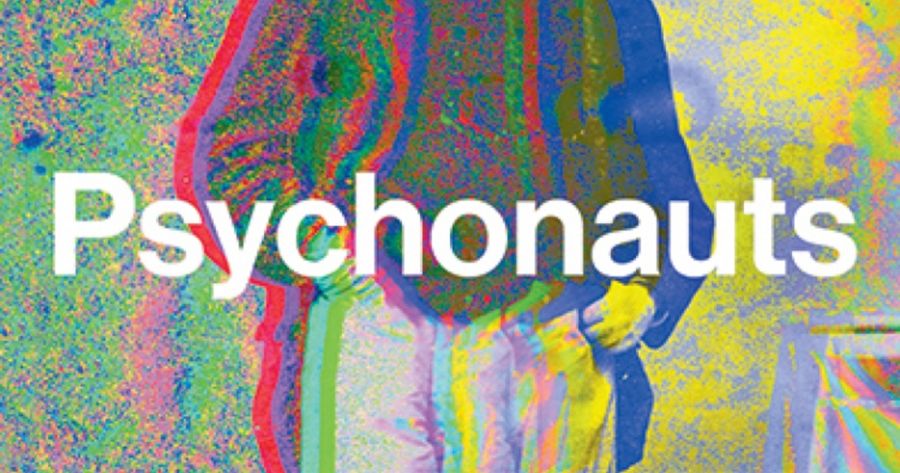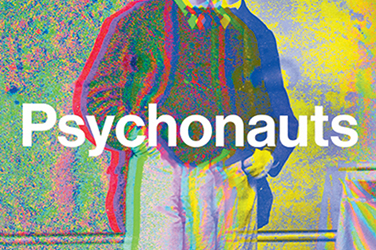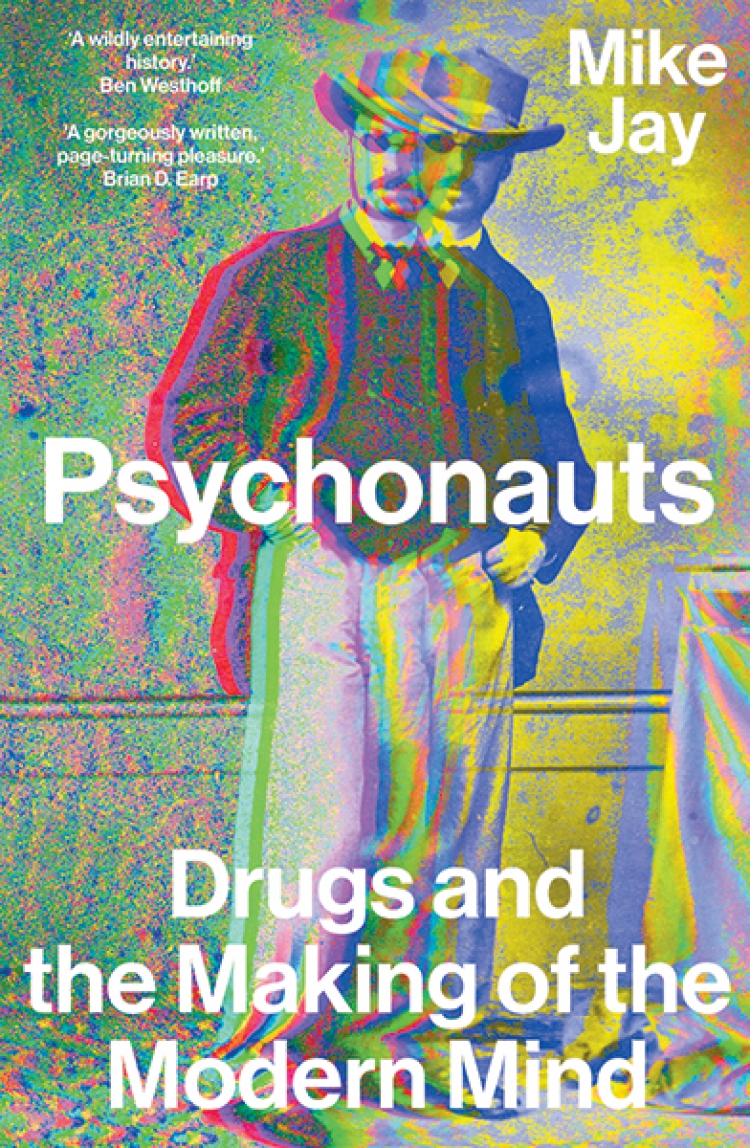
- Free Article: No
- Contents Category: History
- Review Article: Yes
- Article Title: ‘Nothing but othing!’
- Article Subtitle: The use and abuse of mind-altering drugs
- Online Only: No
- Custom Highlight Text:
In his 1927 essay ‘On Being One’s Own Rabbit’, the British-Indian scientist and writer J.B.S. Haldane surveyed the history of an enduring but contentious approach to scientific discovery: self-experimentation. At the age of eight, Haldane tested poison gases on himself in his scientist father’s home laboratory. As an adult, among other self-experiments occasioning losses of consciousness from ‘blows on the head, from fever, anaesthetics, want of oxygen and other causes’, he once induced sufficiently high levels of oxygen saturation to suffer a violent seizure and the crushing of several vertebrae.
- Featured Image (400px * 250px):

- Alt Tag (Featured Image): Ben Brooker reviews 'Psychonauts: Drugs and the making of the modern mind' by Mike Jay
- Book 1 Title: Psychonauts
- Book 1 Subtitle: Drugs and the making of the modern mind
- Book 1 Biblio: Yale University Press, US$32.50 hb, 369 pp
- Book 1 Cover Small (400 x 600):

- Book 1 Cover (800 x 1200):

While Sigmund Freud’s euphoric experiments with cocaine and William James’s spiritual epiphanies on nitrous oxide are well known – James is, after all, a touchstone in Michael Pollan’s How to Change Your Mind (2018), arguably the bible of the current ‘psychedelic renaissance’ – who now remembers Silas Burroughs and the habitués of the Club des Hashischins, or British engineer James Lee’s experiences as a drug taker in the ‘underworlds, drug haunts and jungles of India, China and the Malay Peninsula’? Yet, as Jay contends, ‘their endeavours amount to a remarkable, and remarkably under-studied, episode in Western intellectual history’.
Lee is a case in point. Part of a new generation of British working men with access to scientific societies and lending libraries following the Education Act 1870, the engineer developed a punctilious regime in which he alternated between taking cocaine and morphine, with periods of abstinence in between. Only by doing so could he avoid addiction to either substance and the somatic and psychological disturbances that, even then, were recognised as likely accompaniments to the acquisition of a drug habit. While Lee found cocaine ‘stimulating and exhilarating’, he acknowledged that, as with morphine, it could enervate as well as energise, the effects substantially dependent on what we would today call ‘set and setting’ – the user’s frame of mind and physical surroundings before and during the experience.
It may be easy to forget, when the term ‘drugs’ – which only emerged, as Jay notes, in the early twentieth century – is almost always pejoratively deployed, that self-experimentation with novel mind-altering compounds was once not only socially accepted but also a kind of badge of intellectual adventurousness. The biographies that Jay sketches here, which amount to a prehistory of the gentlemanly acid- and mescaline-dropping among the 1950s intelligentsia, attest to an overlooked fact: the twentieth century’s stigmatisation of the use of drugs to induce non-ordinary states of consciousness is not the rule but the exception, ‘a hiatus,’ as Jay observes, ‘in the long pursuit of our modern selves’.
While literary depictions of drug use were neither uncommon nor unpopular in the nineteenth and early twentieth centuries – some, like Thomas De Quincey’s Confessions of an English Opium-Eater, first published in 1821, were sensations – the problem of how to render ineffable experience in language was faced, if not overcome, by many psychonauts. Take, for instance, the forty-year-old William James’s effusive, verse-like jottings made under the influence of nitrous oxide in 1882:
Reconciliation of opposites; sober, drunk, all the same!
Good and evil reconciled in a laugh!
It escapes, it escapes!
But –
What escapes, WHAT escapes?…
There is a reconciliation!
Reconciliation – econciliation!
By God, how that hurts! By God, how it doesn’t hurt!
Reconciliation of two extremes.
By George, nothing but othing!
That sounds like nonsense, but it is pure onsense!
The task James, and many of Jay’s other subjects, set for themselves was a formidable one: to integrate the fleeting but often profound cosmic insights of altered states of consciousness into ordinary modes of perception. The entrepreneur Benjamin Blood, whose 1874 pamphlet The Anaesthetic Revelation and the Gist of Philosophy had first inspired James to try nitrous oxide, and who himself had the British chemist Humphry Davy to thank for discovering the gas’s consciousness-altering properties in 1799, put it this way:
I learned that nearly every hospital and dental office has its reminiscences of patients who, after a brief anaesthesia, uttered confused fragments of some inarticulate import which always has to do with the mystery of life, of fate, continuance, necessity and cognate abstractions, and all demanding, ‘What is it? What does it all mean, or amount to?’
For some, the answer to Blood’s question was not to be found in metaphysical speculation but in the moral and corporeal degeneration caused by drug use. Robert Louis Stevenson’s The Strange Case of Dr Jekyll and Mr Hyde (1886) became, in Jay’s words, ‘the classic parable of self-experimentation and the dangers of personality-altering drugs’. Arthur Conan Doyle’s Sherlock Holmes stories would similarly chart shifting public opinion on the use of mind-altering compounds, the great detective’s penchant for warding off boredom with cocaine and morphine gradually being written out of the series around the turn of the century.
Ultimately, as global prohibition loomed, drug reportage would largely ossify into a collection of hellish rather than heavenly tropes, ‘allow[ing] publishers’, as Jay writes, ‘to sell immorality while absolving them of the charge of promoting it’. The result has been the almost total disappearance of accounts of self-experimentation and in their place the seemingly unstoppable rise of the moralistic addiction memoir. This book feels like a necessary corrective, and a commendably sober-minded paean to a time when scholarly curiosity could be brought to bear on the relationship between human consciousness and psychoactive drugs without moral or legal reproach.
Impeccably researched and written, Psychonauts belongs alongside Richard Davenport-Hines’s The Pursuit of Oblivion (2001) – and, indeed, much of Jay’s own oeuvre, from Emperors of Dreams (2002) to Mescaline (2019) and others – as one of the essential social histories of the use and abuse of mind-altering drugs.


Comments powered by CComment